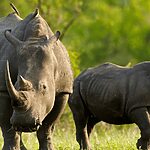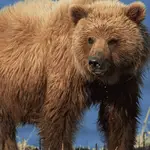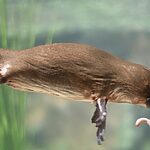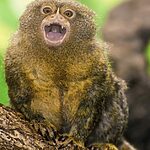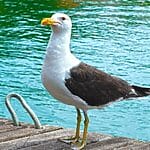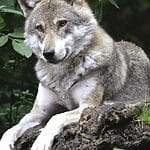Since they are officially the largest rodents in all of North America, it’s hard to miss a beaver when you walk past one with its very thick reddish-brown fur, small rounded ears, and a large flappy tail that looks like a paddle due to the way it’s shaped.
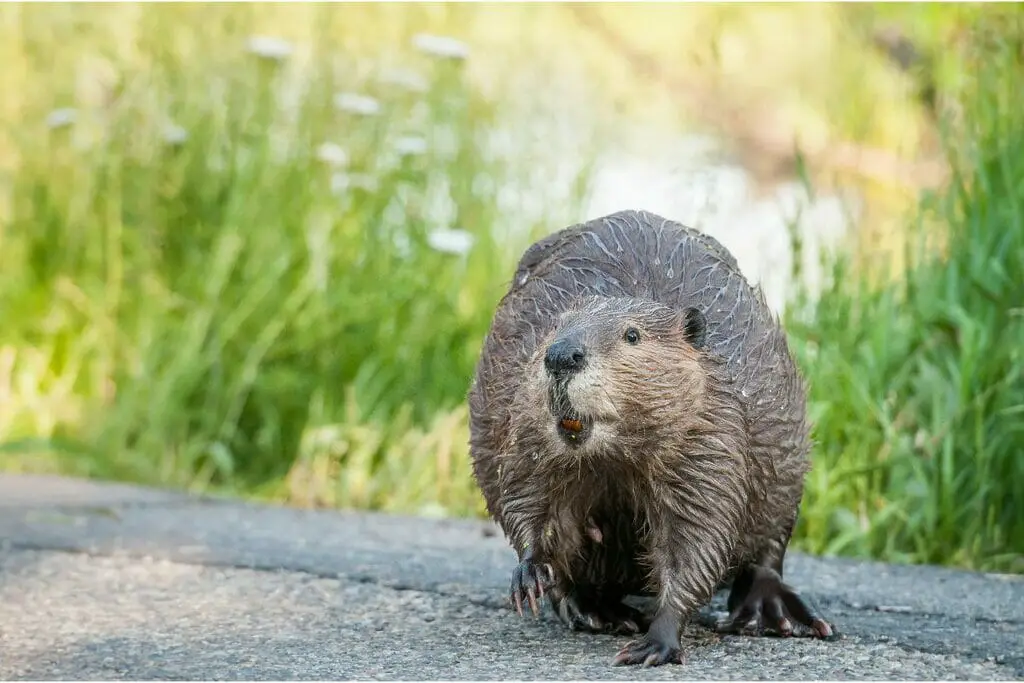
While these large and territorial mammals are a very common sight across any rivers, lakes and marshes in the Northern Hemisphere, there are many other small and furry creatures that can be easily mistaken for a beaver, even though many of them live completely different lives to their lookalike.
Here are some of the most well-known animals that are commonly mistaken for beavers.
Sea Otter
Not only do sea otters share a lot of physical similarities to beavers including webbed feet and tiny rounded ears that make them appear very similar, but since they are also both semiaquatic and spend most of their time in the water, it can be very easy to mistake them, especially while they’re swimming.
One major difference between the two however is that beavers are a lot heavier and far less athletic than sea otters which means they swim much slower and need to use their back feet to help them paddle along the water, while sea otters only need to use their tail and paws.
Unlike beavers, sea otters will also spend a lot of time floating on their backs whether they’re sleeping, sunbathing, or even socializing with other otters, and while they do sport a brown color, their fur often has lighter streaks running through it when compared to beavers.
Marmots
There are many types of squirrels that can mimic the appearance of a beaver, but none look quite as similar as the marmot, a large ground squirrel commonly found in North America and Europe that has deep brown fur and a pair of large incisors on their upper and lower jaws which they use to crunch down on plants and grass since they are omnivores.
Marmots also live underground, building deep burrows which can sometimes be filled with a colony of up to twenty marmots and a single dominant male who has the duty of collecting food.
Beavers similarly make their homes inside the burrows that they create, however beaver burrows and lodges are usually closer to the water, or in many cases, under the water to prevent predators from entering.
Another notable difference is that marmots do not have a tail while also having shorter fur and a rounder face than a beaver, making them very different in appearance when looking at them up close.
Capybara
While the beaver is known as the largest rodent in North America, the capybara is the largest living rodent in the world with adults growing up to 24 inches tall and about the same length as an adult beaver.
Because of their large frames, smooth brown fur, webbed feet and round skull shape, both these rodents look incredibly similar, and even act in much the same way with capybaras being excellent swimmers due to their pig-shaped bodies making them fairly agile in the water.
While there are some smaller differences, such as how beavers are a little smaller than capybaras and have a much rounder body and face, because of their shared similarities in behavior and appearance, many have even described the capybara as a “beaver without a tail”.
Nutria
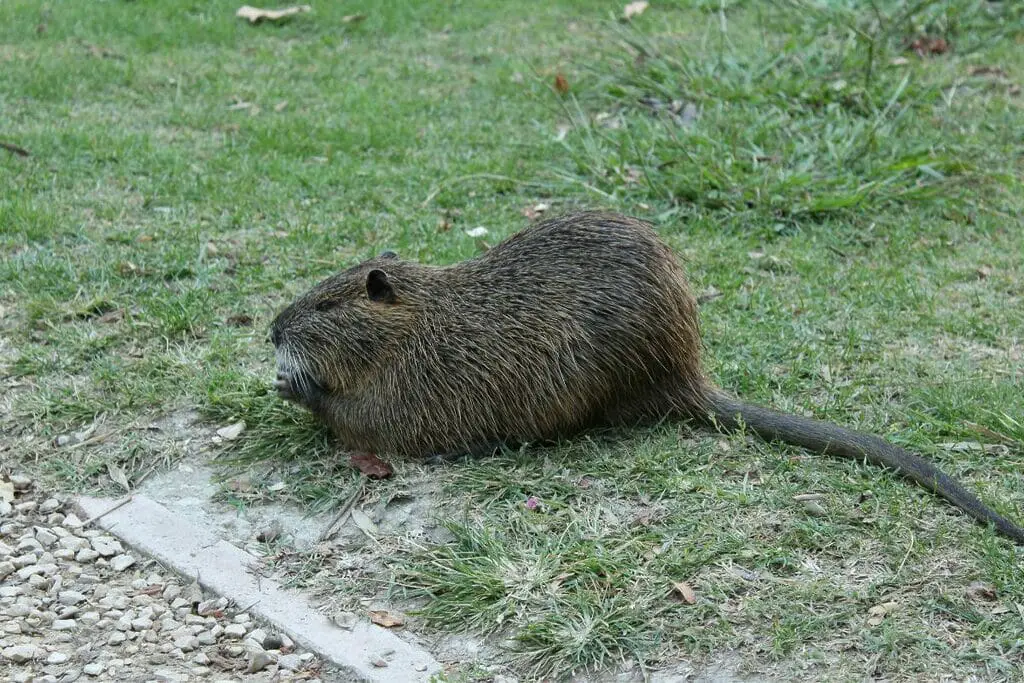
One of the most notable and unique features of a beaver is its tail, and while it’s not identical, the nutria possess a tail that is extremely similar to beavers with it being flat and long with the only difference being that they are more rounded than paddle-shaped and are finely haired.
Nutria are a little smaller than beavers, however they are still larger than muskrats, making them relatively big rodents that on average can grow between 17 and 35 inches in length.
They are known for having a robust body, short limbs, small eyes and ears and very long whiskers, and just like beavers, they have webbed feet that allow them to move freely in the water.
They also live in burrows and nests similar to beavers with the only major difference between the two, other than small features of their appearance, is where they live as while beavers are native to North America and Canada and has only recently began expanding to northern Mexico, nutria are natives of South America with them being a very common sight in Brazil and Columbia.
Muskrat
Small, nimble, and incredibly light weighing only around four pounds on average once they reach adulthood, the muskrat is easily mistaken for beavers not only because of their brown fur and long slender tails, but also because they occupy the same habitat with them being a native of North America and always staying near rivers and marshlands.
Just like beavers, muskrats will use their large flat tail to scare off predators by splashing it against the water, and will also feed on any vegetation they find in the environment, with the two furry rodents acting incredibly similar to each other.
The primary difference and the only clear way to tell the two apart is through their size.
While muskrats will on average weigh up to 4 pounds when fully grown, beavers can grow much bigger and will usually weigh between 30 and 70 pounds in contrast, giving them a much bulkier and rounder frame.
American Mink
Another native of North America, these animals belong to the weasel family, however while it’s quite easy to tell an American mink and a beaver apart when up close, from afar, it can be easy to think these long and slender animals with their flat tails and brown (see also: Animals That Are Brown)fur resemble a beaver, especially when they’re paddling across a river.
Both animals do occupy the same North American rivers after all, and both possess a very distinct reddish-brown color to their fur.
However, this is largely where the similarities end, as minks have much smaller and rounder heads along with shorter and thinner fur that can sometimes be black rather than brown.
While both of these semiaquatic animals are therefore easy to mistake for one another when in the water, up close, it becomes a little easier to tell the long and slender weasel-like American mink from a beaver.
Woodchucks
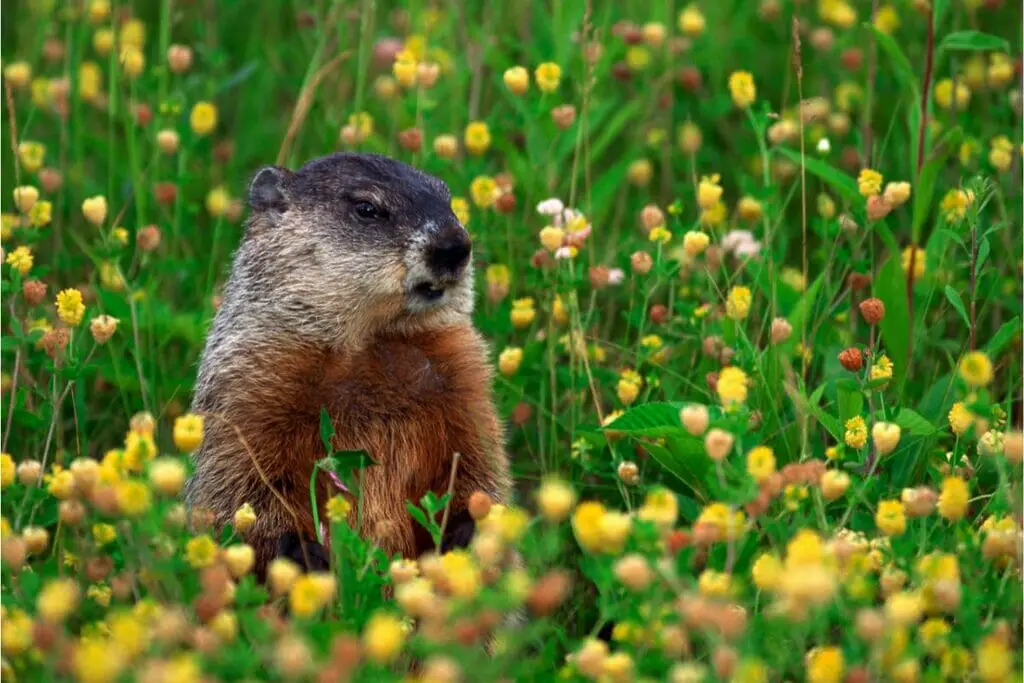
As the largest member of the squirrel family that can grow over two feet long, woodchucks are naturally extremely similar in appearance to beavers who are also closely related to the squirrel family, however, while the beaver is classed as a genus mammal, the woodchuck is a species of a mammal, meaning the two do have slight differences due to their biological makeup.
For example, while both are large rodents with brown fur and stocky bodies, the biggest difference is in their tails as while the beaver have flat and rubbery tails, woodchucks have soft and fluffy tails that are more like the regular tail that can be seen on many other rodents.
Despite both being herbivores, their preferred diet is also slightly different as while woodchucks tend to enjoy eating berries, clover, and alfalfa, beavers are more interested in eating tree bark which is very nutritious for them.
European Water Vole
While this semiaquatic rodent is usually referred to as a “water rat”, they actually resemble beavers far more in their appearance with their two large front teeth and large stocky bodies covered in light brown fur.
While they don’t have webbed feet unlike beavers and should therefore be poor at swimming, they will still commonly reside around rivers and in marshes where they will often paddle across shallow waters.
They also have a very similar diet with them both being herbivores and regularly snacking on leaves, grass and softwood.
Water voles are actually Britain’s fastest declining mammal which is why reintroduction and preservation programs have been implemented over the last few years to keep these endangered creatures protected and while they may live in an entirely different country to beavers, it can be very easy for people living in the UK to mistake the two, especially now that there have been beaver reintroduction projects implemented over the last few years which can make it even harder to tell the two apart.
Quokka
If you’ve ever tried to look up the happiest animal on the planet, chances are you have come across the quokka, a small and furry creature that exclusively lives on the Rottnest and Bald Islands of Australia.
Despite the geographical difference, quokkas have a small, stocky brown frame, just the same as beavers, and both share small rounded ears.
However unlike beavers, quokkas have the ability to climb trees where they prefer to stay rather than swimming around. Nevertheless, there is a reason these adorable rodents have been given the nickname “smiling beavers”.
Summary
Next time you see a brown-furred stocky rodent swimming across a pond or lake, make sure to double-check if it is one of the many similar animals that bear the same appearance as a beaver.
- What Should I Do If A Koala Bites Me? Safety Guide - 2024-05-30
- Are Kangaroos Born Without Hind Legs? A Fascinating Journey - 2024-05-30
- Animals That Look Like Squirrels - 2024-05-30


